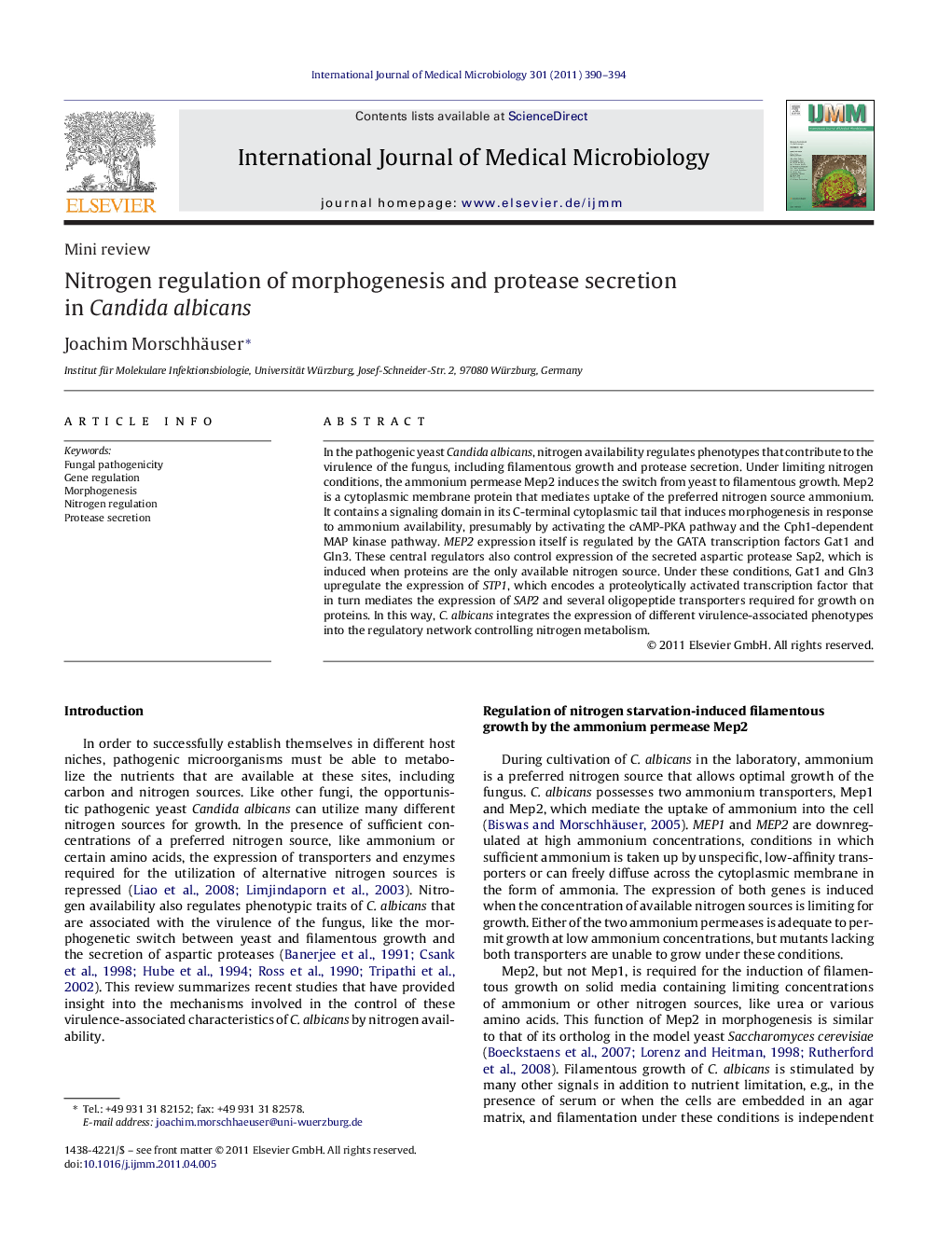| Article ID | Journal | Published Year | Pages | File Type |
|---|---|---|---|---|
| 2054074 | International Journal of Medical Microbiology | 2011 | 5 Pages |
In the pathogenic yeast Candida albicans, nitrogen availability regulates phenotypes that contribute to the virulence of the fungus, including filamentous growth and protease secretion. Under limiting nitrogen conditions, the ammonium permease Mep2 induces the switch from yeast to filamentous growth. Mep2 is a cytoplasmic membrane protein that mediates uptake of the preferred nitrogen source ammonium. It contains a signaling domain in its C-terminal cytoplasmic tail that induces morphogenesis in response to ammonium availability, presumably by activating the cAMP-PKA pathway and the Cph1-dependent MAP kinase pathway. MEP2 expression itself is regulated by the GATA transcription factors Gat1 and Gln3. These central regulators also control expression of the secreted aspartic protease Sap2, which is induced when proteins are the only available nitrogen source. Under these conditions, Gat1 and Gln3 upregulate the expression of STP1, which encodes a proteolytically activated transcription factor that in turn mediates the expression of SAP2 and several oligopeptide transporters required for growth on proteins. In this way, C. albicans integrates the expression of different virulence-associated phenotypes into the regulatory network controlling nitrogen metabolism.
